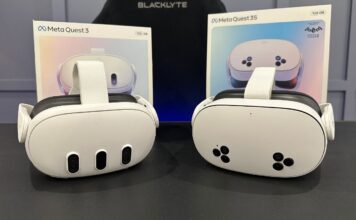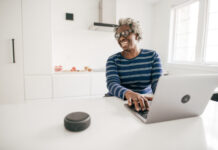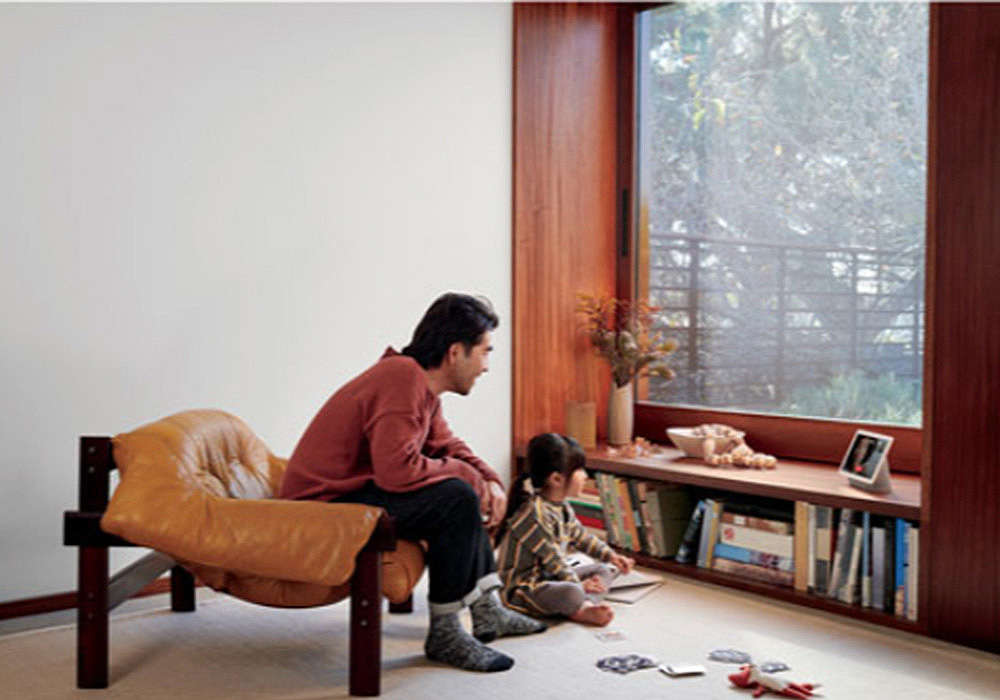 Smart displays are one of the newest tools available to help you care for older loved ones. These devices are simple for you to set up, and easy for older adults, who may be fairly new to the latest technology, to use. They include advanced features like voice-activation that simplify communication, by enabling older adults with limited vision or reduced dexterity to continue to interact with the device. Smart displays can contribute to making the everyday life of your older loved ones more convenient, fun, and social.
Smart displays are one of the newest tools available to help you care for older loved ones. These devices are simple for you to set up, and easy for older adults, who may be fairly new to the latest technology, to use. They include advanced features like voice-activation that simplify communication, by enabling older adults with limited vision or reduced dexterity to continue to interact with the device. Smart displays can contribute to making the everyday life of your older loved ones more convenient, fun, and social.
With the pandemic, the ways we interact with our friends and families have greatly changed; using technology to stay connected digitally on a daily basis has become the norm. Many people use laptops or tablet computers such as iPads as a primary method of communication with anyone who lives outside of their principal residence. Despite being a newcomer to the technology landscape, smart displays too are quickly becoming a fixture in terms of home technology. Compared to computers and tablets, smart displays are simpler and easier to use, yet packed with many useful features. They are a great alternative for older adults to stay connected with friends and family. Read on to know which smart display works best for you and your older loved ones.
Smart display is a great home assistant
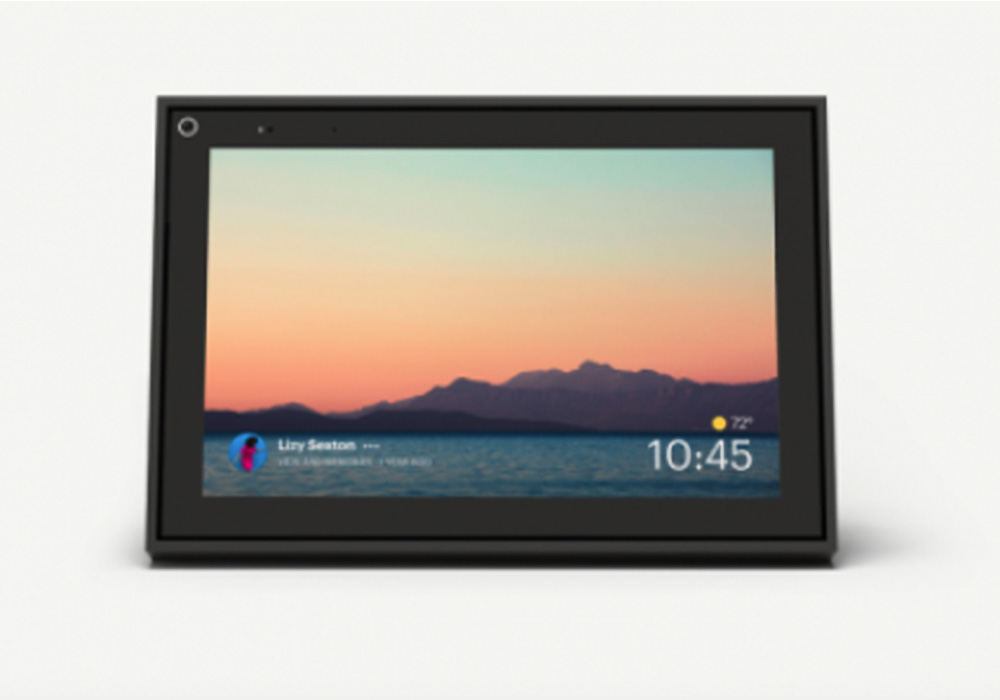
Smart displays are great virtual assistants. They allow you to perform many tasks hand-free by issuing a simple voice command. Use the virtual assistant built into the device to call family and friends, listen to music, check the weather, look up new recipes, schedule events, and more. While many functions and uses are driven by voice control, you can also use the touchscreen to access more features. While listening to music, for example, you can browse for more songs to play next from your playlist, or hit the video button while calling family and friends to switch from an audio call to a video call so you can see them in real-time.
Get the smart display for the things you like
Different brands and models of smart displays come with a similar core set of features, though some devices are excellent at certain tasks. For example, some smart displays have larger speakers and, as such, excel at playing music. Some of the most popular smart displays include Google Nest Hub, Facebook Portal, and Amazon Echo Show devices.
Stay Connected
Most smart displays include built in web cams, microphones, and speakers for video calling. Depending on the brand, the available video calling services will vary. For example, Facebook Portal has Facebook Messenger and WhatsApp already built-in; Google Nest Hub Max uses Google Duo; and Amazon’s Echo Show uses the Alexa app. In addition, each of these brands have recently added the ability to make and join Zoom meetings from most of their smart displays. The specific apps and services your family currently uses may help you to decide which is the best smart display for your needs.
In addition, most smart displays allow the use of voice commands to make and receive calls. For older adults who live alone, the device calling feature can also be used to ask for additional help when needed. Some devices also come with large screens and motorized bases to keep the person in-frame; or they may include interactive story features to make video calls more fun and interactive.
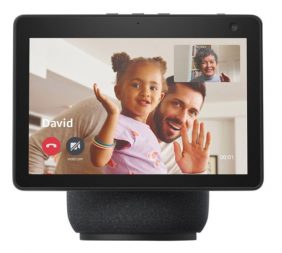
Drop in
There may be days when you try to get in contact with mom or dad, but they don’t pick up the phone and you are becoming concerned. Amazon Echo smart displays offer a ”Drop In” feature allowing selected users to instantly connect with a device and start a video call or conversation without the other party explicitly answering the call. This feature is great if your loved one is home but unable to answer a call, or if you just want to say “Hi” but don’t want them to rush into picking up the phone (or be searching to find their phone!). When your parent receives a Drop In, the light indicator on the device pulses green and the camera, mic, and speakers get activated. Other smart devices such as the Google Nest Hub Max have the option to use its built-in camera as a Nest surveillance camera and mic to allow selected users to view live video and speak through the device, similar to a security camera.
Many celebrations with family and friends are now held online. Even when mom and dad are not able to attend the event, photos can be shared using the smart display. Acting as a digital photo frame, shared photo albums can be accessed and shared with selected individuals. With Google Photos album, for example, you can remotely upload photos to your parents Google Nest Hub Max, and set them up to become part of the regular rotation of background images. This feature is available on most devices. Facebook Portal in particular makes it easy as you can have pictures from Facebook photo album displayed on mom or dad’s smart display.
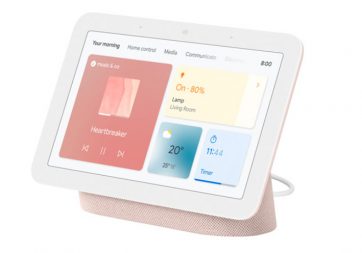
Set Reminders
Reminders is a great feature on smart displays and can be remotely created from anywhere and assigned to a loved one’s device in their home. Google Nest Hub Max allows you assign a reminder to someone who is in your family group. With this feature, you can set up reminders by saying “Ok Google, remind mom to drink a cup of water at 8 am” or “Ok Google, remind mom about her doctor’s appointment at 3 pm.” The smart display will then alert mom that she has a reminder for her at that time and she can then ask the smart display to show or read out the reminder.
How do I choose a smart display?
As a rough rule of thumb, the larger the smart display the better the user experience, especially for those with visual impairment. But, there are more factors to consider when thinking about purchasing a smart display than just the size, especially when you’re buying it for your older loved ones.
First of all, think about how they are going to be using the device. If mom or dad will primarily be using it for video calling or video viewing, display size is an important consideration. If mom or dad has a hearing impairment, the sound quality is important. Lastly, consider what devices and programs your family is currently using. If you regularly communicate through Facebook Messenger or Whatsapp, you will want to consider the Facebook Portal devices. If you currently keep a Google Photos album shared with other family members or the majority of the family use Google services and devices, the Google Nest Hub Max may be good to explore. Alternatively, if the recipient of this new smart display is not familiar with technology and you want the simplest way to initiate a video or voice call with them, the Amazon Echo Show devices maybe a good fit with their Drop In feature.
Smart displays can offer many benefits to older adults. It can not only support them to stay connected with their loved ones but also provide the tools to be independent. If you are supporting your mom or dad, it may provide you with peace of mind, knowing that you can easily connect with them, even from afar. Learn more about smart displays by reading more articles in this blog series:
- 7 ways older adults can use a smart display to have fun
-
How can I pre-set up a smart display for my older family even if I can’t visit them















